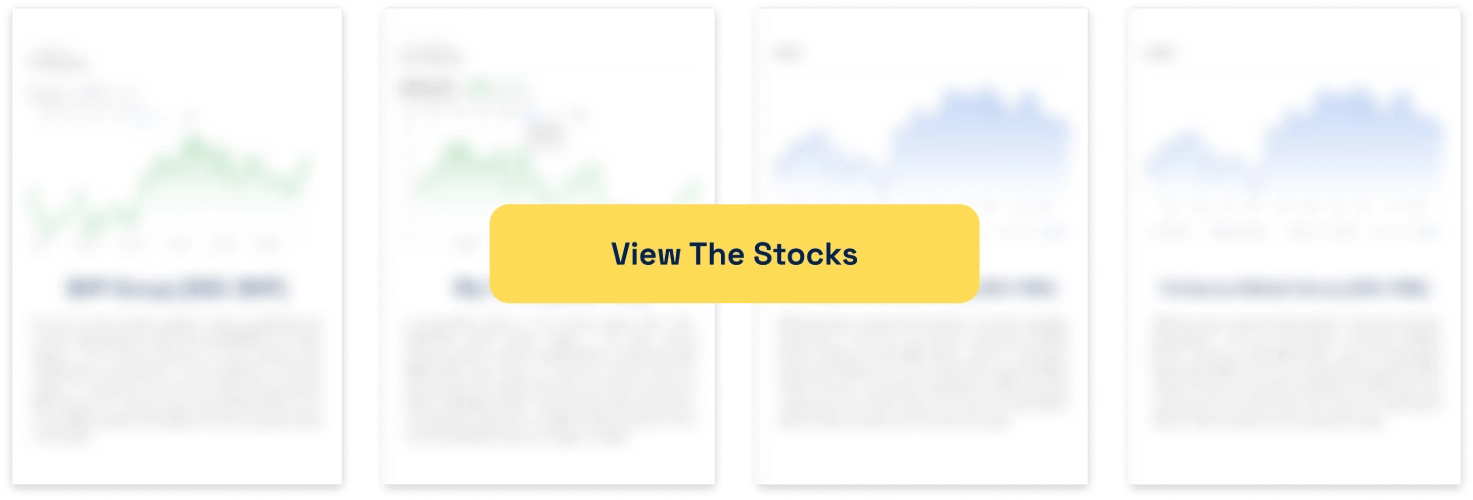Is the ‘Trump Crash’ a Temporary Panic or the Start of Something Bigger?
![]() Ujjwal Maheshwari, April 10, 2025
Ujjwal Maheshwari, April 10, 2025
In recent weeks, we’ve witnessed ‘Trump Crash’ – we’re talking about the market correction that has occurred since mid-February causing the ASX 200 (as well as many other international indices) to fall over 10%.
At the start of 2025, it appeared that equity markets were bound for a good year. Interest rates would be on the way down as the fight against inflation was prevailing. The newly re-elected Trump would purportedly be pro-business and lead the US economy back to booming time again.
But just when things look to be perfect, all it takes is a shift in sentiment, a rise in political risk, or the threat of a change in direction from central figures, and the dominoes start falling. That’s precisely what we’ve witnessed in “Trump Crash.” But are we really looking at a short-term overreaction, or is this the early warning sign of something far more systemic?
What Is the “Trump Crash”?
As we noted above, the so-called “Trump Crash” refers to a sharp drop in global markets, particularly the S&P 500 and tech-heavy NASDAQ, coinciding with a resurgence in Donald Trump’s polling numbers ahead of the 2024 US presidential election. As of the close of trade on April 11, 2025; the ASX 200 is down 10.6% from its mid-Febraury highs. And similar declines have been seen in other indices too. Some of them are off lows reached just a few days earlier but could easily decline again.
Investors are concerned by his economic rhetoric, trade policies, and potential disruptions to regulatory and monetary frameworks. Even though there have been some significantly upward days for the markets (like Thursday April 10 when the ASX rocketed 4.5%, making it the best performing day in 5 years), the volatility tells us one thing: uncertainty has returned to the markets.
What’s Spooking Investors?
It’s easy to paint the sell-off as politically driven, but in reality, it’s a convergence of several layered risks. At the core is a fear that a second Trump term is not going to be the pro-business environment investors envisioned. Instead, it seems he could further destabilise an already fragile global economic environment, just when it was perceived that there would be stability.
His promises or threats, depending on the lens, to impose sweeping tariffs on Chinese and European goods, gut climate regulation, and replace key figures at the Federal Reserve, have raised the spectre of inflation, debt instability, and global trade retaliation.
In March, the rot set in as tariffs were imposed on China and Canada. But on April 2, he imposed tariffs on just about all countries. Even allies like Australia were hit with 10% tariffs whilst China copped tariffs over 100%. Many countries imposed counter-tariffs, whilst others sought to promote their own domesticated goods over American goods – particularly Canada. If investors thought the first Trump trade war, which was really only tariffs on China, was bad – they hadn’t seen anything yet. Even though Trump has backed down on most of his tariffs for a few months, wanting countries to ‘come to the table’ – what’ll happen if they don’t? These tariffs threaten already fragile supply chains, spiking import prices, and fuelling inflation just as central banks are struggling to bring it under control.
Moreover, there’s the issue of institutional trust. Trump has made no secret of his disdain for the Federal Reserve’s independence. Should he win and act on promises to oust current Fed Chair Jerome Powell and replace him with a more dovish loyalist, markets could lose faith in the Fed’s commitment to inflation targeting, triggering sell-offs in both equities and bonds.
Is This Just Pre-Election Volatility — Or Something More Structural?
Every election cycle introduces uncertainty. Markets brace for change, reprice risk, and generally fluctuate in the lead-up to any major political event. But in our view, what’s happening now feels more than routine volatility. It’s not just about who wins; it’s about the fundamental architecture of fiscal, trade, and central bank policy that could be overhauled under Trump 2.0.
Layered over this political uncertainty is a broader macroeconomic fragility. Central banks, including the US Federal Reserve and the Reserve Bank of Australia, have kept interest rates elevated far longer than initially anticipated. The US Fed, in particular, has pushed back expectations of rate cuts, and now many economists don’t see easing until the latter half of 2025.
Meanwhile, global growth forecasts continue to fall. The IMF’s April 2025 World Economic Outlook downgraded its global GDP projection to 2.6% for the year, a pace well below historical averages and insufficient to absorb global debt and equity valuations that have been inflated by years of low interest rates.
Put simply, we’re in a fragile environment. And Trump’s rhetoric is pouring petrol on the fire.
Could It Get Worse Before It Gets Better?
That’s the trillion-dollar question. If Trump continues to rise in the polls and markets believe his return is inevitable, further corrections are likely. The sectors that rallied hard in the post-COVID, low-rate environment, such as tech, property, and consumer discretionary, could face a brutal repricing.
Bond yields are already ticking higher, with the 10-year US Treasury yield flirting with 5%. That’s the level at which even the most bullish equity investors start to question their exposure. Rising yields not only reduce the appeal of growth stocks but also increase the cost of corporate borrowing, potentially slowing down buybacks and expansion plans.
Adding to the anxiety is the recent spike in market volatility. The VIX, often dubbed the “fear gauge,” has jumped to levels last seen in the early days of the COVID crisis. Gold has surged past US$2,300 an ounce, and Bitcoin, often seen as a hedge against traditional financial instability, has bounced above US$70,000. When investors are seeking safety in gold and crypto simultaneously, you know the fear is real.
What About the Australian Market?
Australian investors might feel geographically removed from the White House, but our market is intricately tied to the global risk cycle. A Trump presidency could hit Australia in multiple ways, both directly and indirectly.
To begin with, Australia’s largest trading partner is China. If Trump escalates tariffs or sparks a renewed trade war, Chinese exports could slump, weakening China’s demand for Australian iron ore, coal, and lithium. That’s bad news for miners, particularly the likes of BHP, Rio Tinto, and Pilbara Minerals, all of which have seen their share prices under pressure in recent weeks.
There’s also a correlation between the US and Australian tech sectors. While smaller in scale, ASX-listed tech names tend to mirror NASDAQ trends. If the NASDAQ continues to fall, local tech firms could see capital dry up and valuations slashed.
On a broader level, the Trump effect could trigger capital outflows from risk markets, pushing the Australian dollar lower. A falling AUD might help exporters but would also drive up inflation via more expensive imports, complicating the RBA’s already tricky monetary policy stance.
What Are Fund Managers Saying?
We’ve seen a flurry of commentary from Australian and international asset managers.
AMP Capital said in its April 2025 market update that “Trump 2.0 could reintroduce volatility into long-duration assets.”
Macquarie Wealth Management noted that “investors should brace for higher inflation volatility if tariffs escalate.”
BlackRock has shifted allocations toward gold and defensive consumer stocks, signalling reduced conviction in high-beta plays.
In our view, this isn’t a coordinated panic — it’s a pre-emptive rebalancing.
Could There Be a Silver Lining?
In fairness, not all outcomes are bearish. Some investors believe that a Trump presidency could reignite certain parts of the economy. The former president’s promises to cut taxes, remove regulatory roadblocks, and boost infrastructure spending have their appeal. His first term saw solid stock market performance, particularly in energy, defence, and industrials.
For instance, defence stocks outperformed the broader market by 15% between 2017 and 2020, buoyed by rising military budgets and geopolitical tension. If history repeats, similar beneficiaries could include Lockheed Martin, Northrop Grumman, and even Australian defence-linked suppliers like Austal.
Nonetheless, betting on Trump-led growth while ignoring volatility risk feels overly optimistic. Even if growth sectors benefit, the cost may be higher volatility, trade friction, and greater economic divergence between allies, a combination that could be tough for investors to manage.
So, Is the “Trump Crash” a Panic or the Beginning of a Bigger Storm?
We believe the answer lies somewhere in the middle. There’s certainly an element of panic, a reaction to headlines, polls, and the man himself. But underneath the surface, this panic reflects deeper anxieties about economic resilience, political instability, and the diminishing credibility of key institutions.
The global economy isn’t in freefall, but it is walking a tightrope. If Trump returns, markets will need to adjust to a different reality, one where fiscal discipline, global cooperation, and central bank autonomy are no longer guaranteed.
Australian investors should not dismiss this as a “US-only” issue. With commodity exposure, tech fragility, and tight monetary conditions at home, the ASX is as vulnerable as any global market to Trump-era shocks.
Now, more than ever, it’s time to be selective, to focus on real cash flow and defensive positioning, and to keep a close eye on the bigger picture.
What are the Best ASX Stocks to invest in?
Check our buy/sell tips
FAQs
- What caused the so-called “Trump Crash”?
The “Trump Crash” refers to recent market volatility triggered by the rising chances of Donald Trump’s return to the White House. Investors are concerned about the potential reintroduction of aggressive trade, tax, and regulatory policies.
- Is the Trump Crash affecting Australian investors?
Yes. Given Australia’s trade reliance on China and exposure to global equities, local markets have felt the ripple effects. The ASX 200 has experienced increased volatility since Trump began gaining ground in the polls.
- Which sectors might benefit from a Trump presidency?
Sectors like defence, traditional energy, and infrastructure could rally if Trump cuts regulations and boosts federal spending. However, tech and green energy may underperform under his policy direction.
- Should investors sell now or wait?
In our view, long-term investors shouldn’t panic sell. Instead, they should consider rebalancing their portfolios towards income-generating and defensive assets while limiting exposure to sectors likely to face regulatory headwinds.
- How can Australian investors hedge against US political risk?
Diversifying into commodities, gold, and ASX-listed dividend stocks is one way. Other options include investing in actively managed funds with a global mandate or using ETFs that track volatility or inverse market performance.
Blog Categories
Get Our Top 5 ASX Stocks for FY25
Recent Posts
6 ASX stocks you forgot were listed
Here are 6 ASX stocks you forgot were listed Brisbane Broncos (ASX:BBL) No it is not a mistake. This…
Inghams shares have been volatile in the last 12 months, but better times might be ahead
It has been a while since we last wrote about Inghams shares (ASX:ING) – 8 months to be exact. It…
Its reporting season in New Zealand in May and these 5 ASX companies are about to report annual results
Its always reporting season in New Zealand in May as well as November, because many companies there follow an April…



